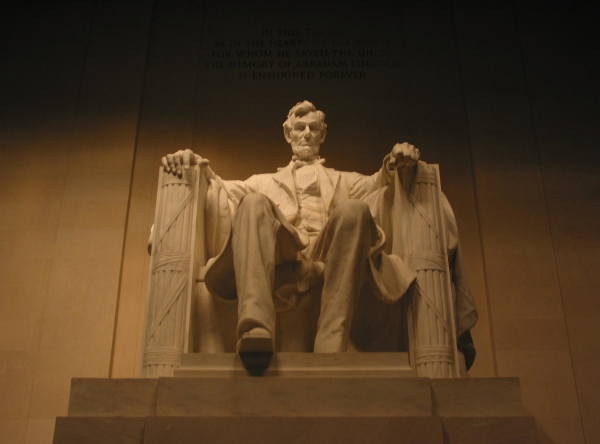
The campaign for the American presidential election is disappointing. Not because of the personalities in the fray: on the contrary, they are resonant, impressive, and far more complex, in truth, than those that faced each other the past few times in Europe. Not because Mrs. Clinton is going to have to pull out – it’s unfortunate, but as seen from France, it is not easy to decide between the two democratic contenders.
It’s disappointing because we’re not at the end. Not yet, one would say. There are still six months until November, and the content of the candidate’s programs could become important again in a race that for the moment is playing out on character, age, color or sex. But with the way it is right now, and since the decisive states will be those of the old industrial belt (from Pennsylvania to Wisconsin), one dreads that the fight might continue on its current bad course: that of populism.
Hillary Clinton and Barak Obama have descended into protectionist one-upmanship from the moment it became necessary to carry the blue collar vote. They inveigh against the free-trade agreement with Canada and Mexico: it would cause relocations. John McCain, who has long been silent on economic matters – this not being his home turf – spoke up to propose eliminating gasoline taxes this summer in order to provide relief to households. Mrs. Clinton, unfortunately, went even further than this proposal, which is 1,000 % demagogy.
The disappointment is in proportion to the hope, which is great: to see America reinvent itself as a model of united society for the 21st century. “The Americans want to rebuild the nation,” summarizes Thomas Friedman, editorial columnist for the New York Times. “We have lost our power in the last few decades, and the values of our parents – hard work, study, saving, investment, living within one’s means – were taken over by the Asians, while here, they have given way to subprime values.” The Americans dream of an end to the long slide into egoism, social injustice, the poor state of infrastructure and the restriction of civil rights, the crisis point of which will have been the Bush era.
With its morale at its lowest due to the housing and financial crises and the setbacks in Iraq, America is at a turning point. Thirty years ago it embraced the Reagan revolution of economic liberalism, and it has since benefited from a glowing economy, drawing on the best advantages of technology, immigration and globalization. But today, social institutions are damaged to the point of threatening the American dream itself: the possibility given to all to succeed. The median salary is no longer increasing, the fruits of growth are no longer shared, the middle class has been pushed off the social ladder.
The rhetoric is there in Barack Obama, who sings the praises of a new ideal, as is John McCain. The themes taken up are the right ones, but the substance of the responses that is lacking – except when they lapse into demagogy, as if the solution to post-liberalism lies in a return to the 1960s.
1. The subprime loan crisis makes clear the need to save the 4 million households overburdened with debt (out of the 55 million that have entered into a mortgage). But above all it underlines the urgency of finding another motor for growth than indebtedness. Which one? Will the United States have to experience a long period of weak growth, of the type seen in the European Union?
2. The gas tax raises the even greater problem of the development of purchasing power and the redistributive power of taxation. Does America need to restore taxation in order to begin to reduce inequality and revive infrastructure spending (roads and bridges, which have fallen to third-world quality)?
3. Social security. Mrs. Clinton and Mr. Obama propose to establish health coverage for the 47 million Americans who do not have it. At the same time, the large automobile companies can no longer ensure the retirement benefits of their former employees. The larger question at hand is about social services and fine-tuning the balance between private insurance and public coverage.
4. The blue color workers of the former industries. How can we keep the candidates, but also many elected officials in Washington, from giving in to the protectionist temptation? America responds with mobility: the unemployed can remake their lives in the flourishing southern states. Is this still an adequate response?
5. In order to differentiate themselves during the primaries, the candidates have played up the rivalries between categories: the young and the old, the working class and the degree holders, women and men, whites and blacks, etc. The impression given by this vote-catching is one of merciless battle for the sharing of the social cake. Is this inevitable? Can there be a new sharing of the gains of economic growth?
John McCain has as yet only given very few indications about his economic and social politics. Barack Obama has remained very vague behind his idealist tone. Regardless, the American choice will be followed very closely here in Europe, where the political class of both the right and the left is hardly more advanced in this same question: how to rebuild the nation?

Leave a Reply
You must be logged in to post a comment.